When it comes to footwear, understanding size conversion between men’s and women’s shoes is crucial for making the right purchasing decisions. Whether you’re a woman looking to buy stylish sneakers or a man in need of a comfortable pair of shoes, knowing how to navigate the size differences can save you time and frustration. In this comprehensive guide, we will explore everything you need to know about men’s size shoes to women’s, including conversion methods, tips for buying shoes, comparisons of various platforms, and cultural insights that affect shoe choices.
Why Size Conversion Matters
In the USA, shoe sizes can vary significantly between men and women. Understanding these differences can lead to a better fit and overall comfort. Let’s dive into the specifics of size conversion:
Understanding Shoe Size Systems
The United States follows a different sizing system for men and women, which can lead to confusion. Generally, men’s sizes are about 1.5 sizes larger than women’s. For example, a men’s size 8 is approximately equal to a women’s size 9.5. However, this can vary by brand and style, making it essential to consider the specific shoe’s sizing chart.
Different Standards Across Brands
Not all brands adhere to the same sizing standard. Some may run larger or smaller than the typical conversion. It’s always best to check the brand’s specific size chart before making a purchase.
Men’s Shoe Sizes Compared to Women’s
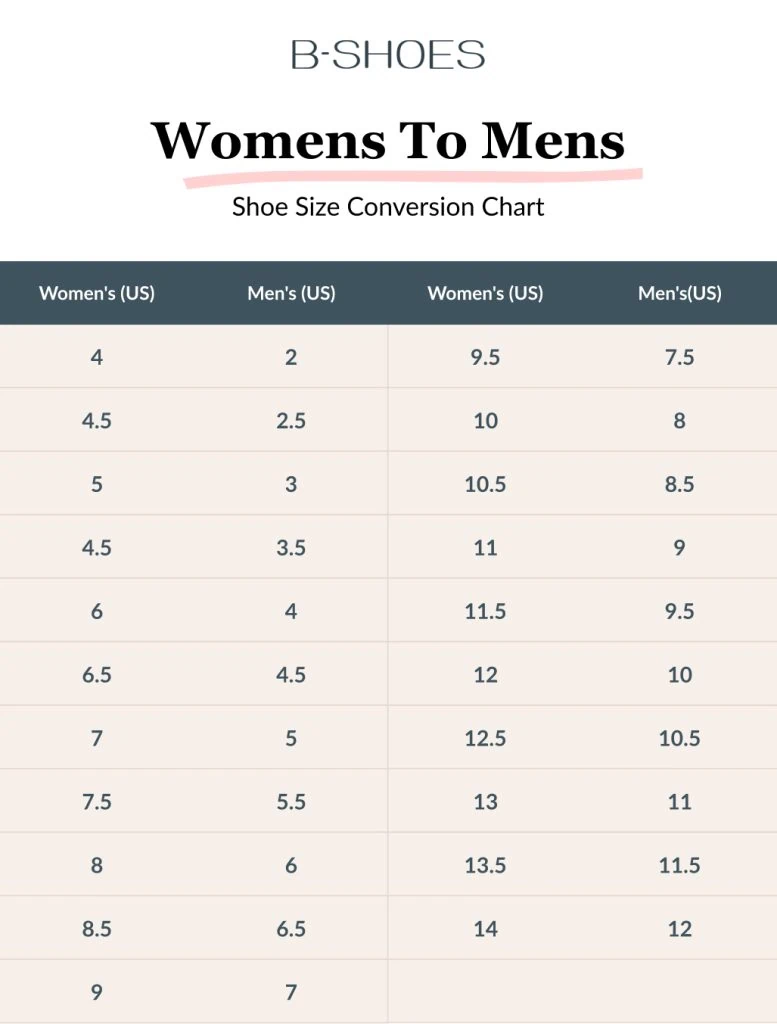
Size Conversion Chart
| Men’s Size | Women’s Size |
|---|---|
| 6 | 7.5 |
| 7 | 8.5 |
| 8 | 9.5 |
| 9 | 10.5 |
| 10 | 11.5 |
| 11 | 12.5 |
| 12 | 13.5 |
Regional Differences and Cultural Impacts
Shoe sizing can also reflect cultural trends. In the United States, athletic shoes tend to be available in unisex sizes, while high-fashion shoes often retain strict gender divisions. This cultural nuance affects how consumers approach sizing when shopping online or in physical stores.
Tips for Buying Shoes
1. Measure Your Feet
The first step in buying shoes, whether men’s or women’s, is to measure your feet. Use a ruler or measuring tape to determine the length and width of your foot.
2. Consult Size Charts
Always refer to the specific size chart provided by the retailer or brand. Sizes can vary significantly across manufacturers.

3. Read Reviews
Customer reviews can provide insight into whether a specific shoe runs true to size, small, or large.
4. Try Before You Buy
If possible, try on shoes in-store to ensure the perfect fit. If you’re shopping online, check the retailer’s return policy in case you need to exchange sizes.
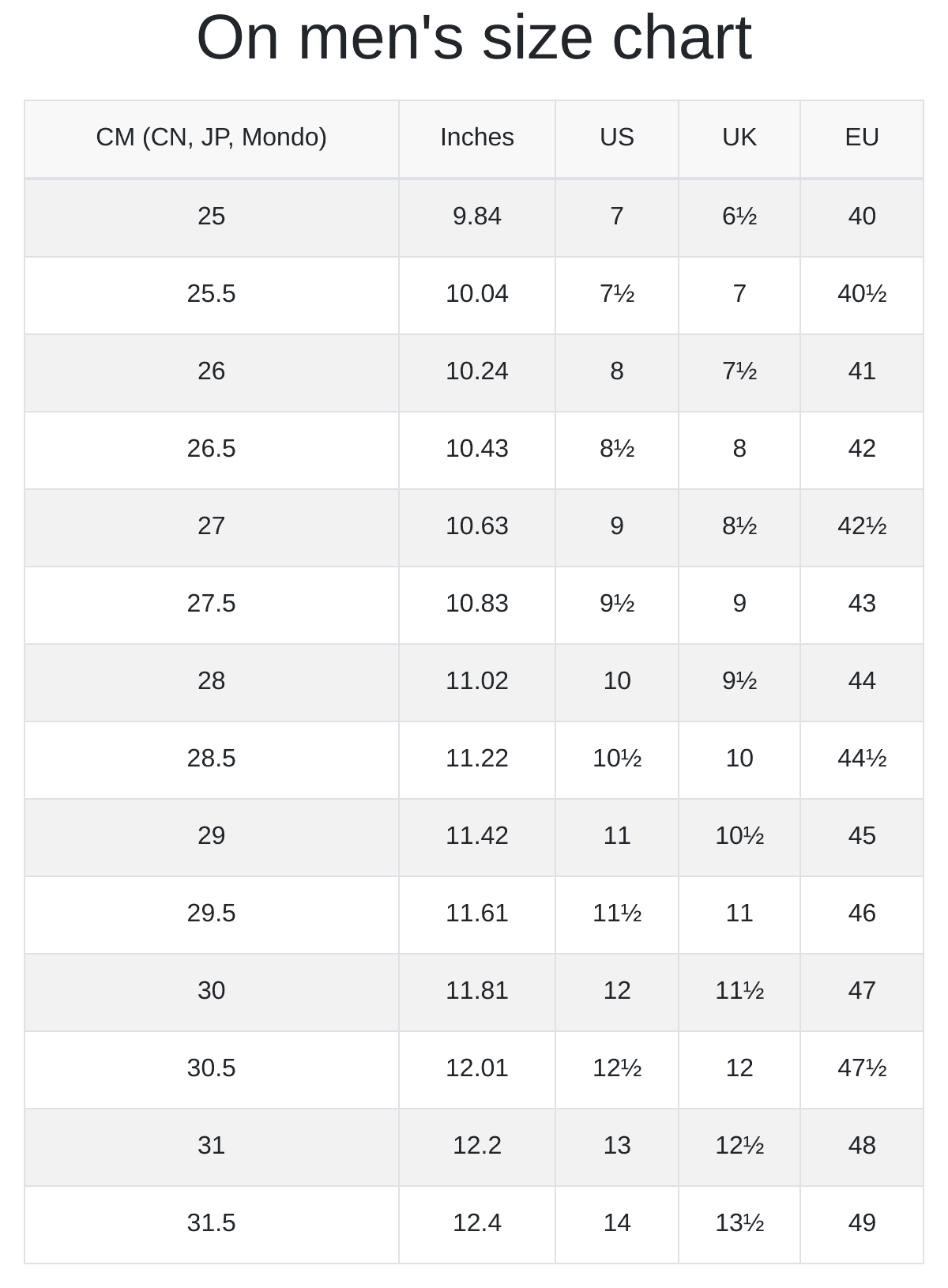
Popular Platforms for Shoe Shopping
Several platforms cater to the needs of shoppers looking to convert men’s shoe sizes to women’s. Here are some popular options:
1. Amazon
Amazon provides an extensive collection of shoes with size conversion charts and user reviews. They often have user-friendly return policies that allow easy exchanges.
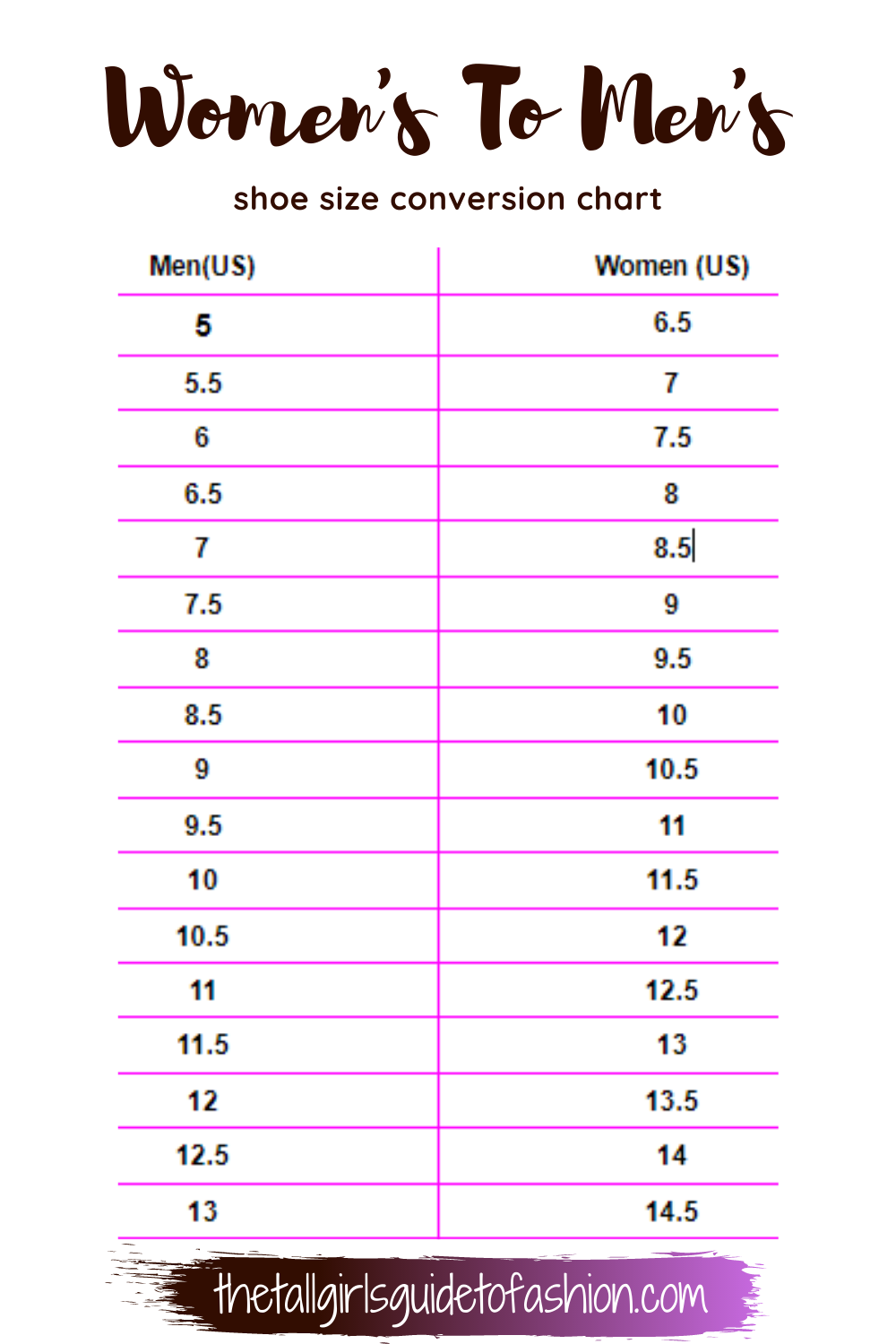
2. Zappos
Zappos is known for its customer service and wide range of options. Their size charts and fitting guides are beneficial for making the right choice.
3. Nike & Adidas
Both brands provide online guides for converting men’s sizes to women’s. They also offer unisex models which can simplify the buying process.
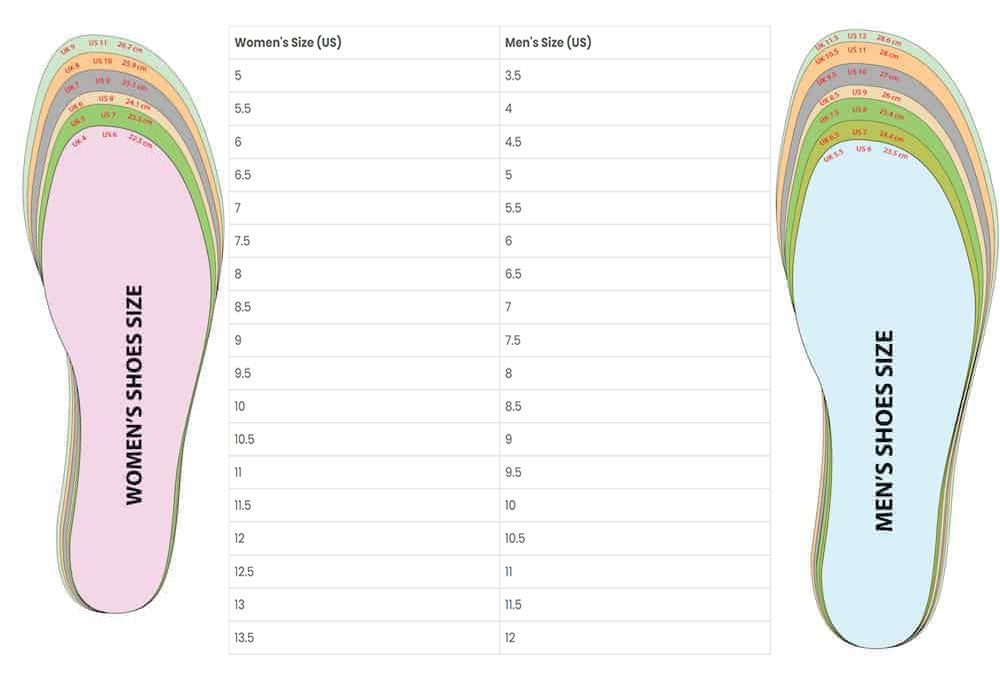
4. DSW
DSW (Designer Shoe Warehouse) has a variety of brands and provides detailed sizing information along with customer feedback to help with sizing decisions.
Pros and Cons of Different Shopping Methods
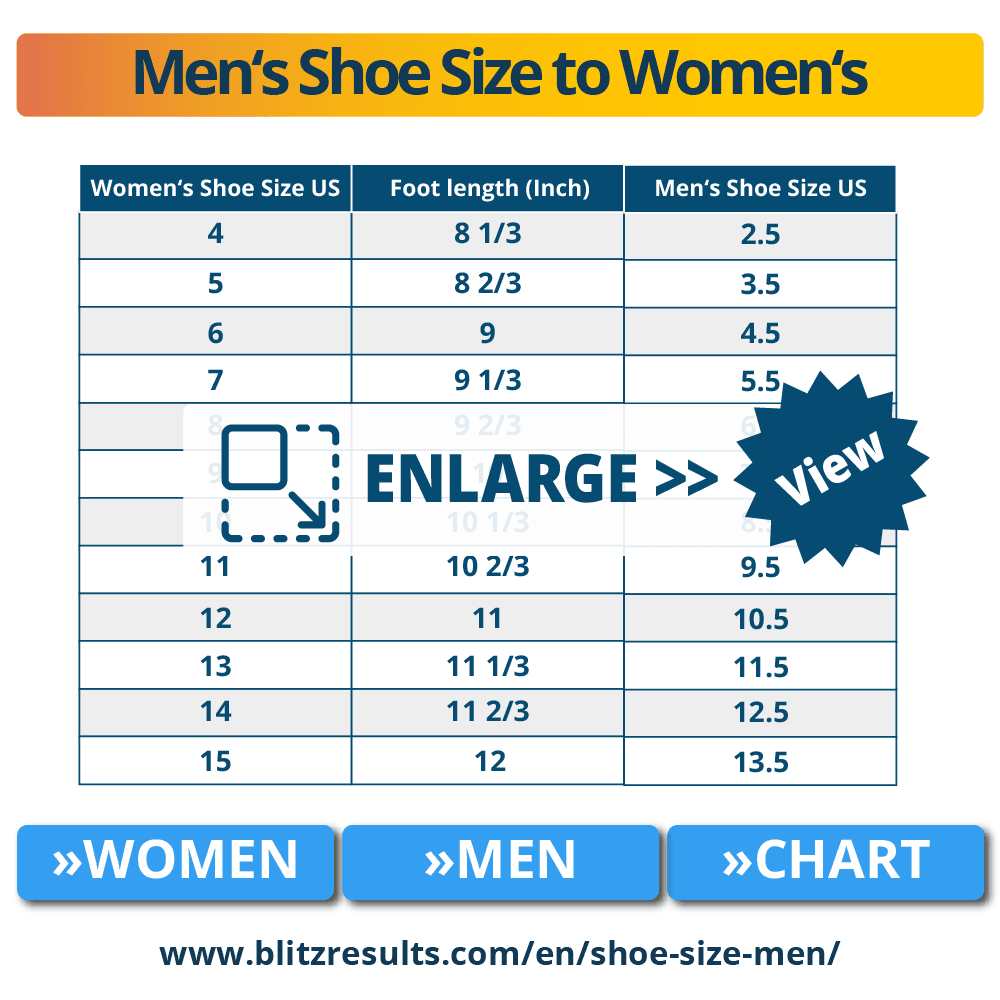
Online Shopping
Pros:
- Wider selection of styles and sizes
- Convenience of shopping from home
- Access to customer reviews for better decision-making
Cons:
- Inability to try on shoes before purchase
- Possible shipping costs or delays
- Complicated return processes for some retailers
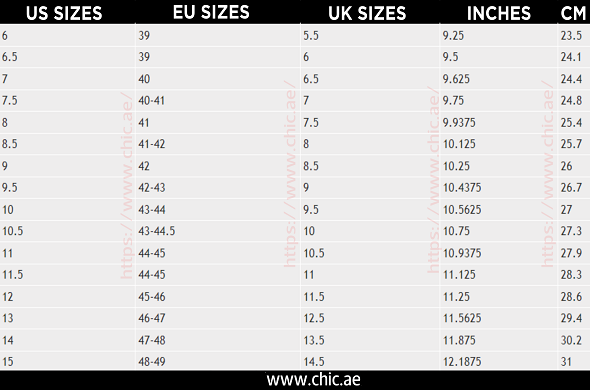
In-Store Shopping
Pros:
- Ability to try on shoes and assess fit in real-time
- Immediate purchase without waiting for shipping
- Personal assistance from sales staff
Cons:
- Limited stock compared to online options
- Potential for crowded stores leading to longer waiting times
- Inconvenient store hours
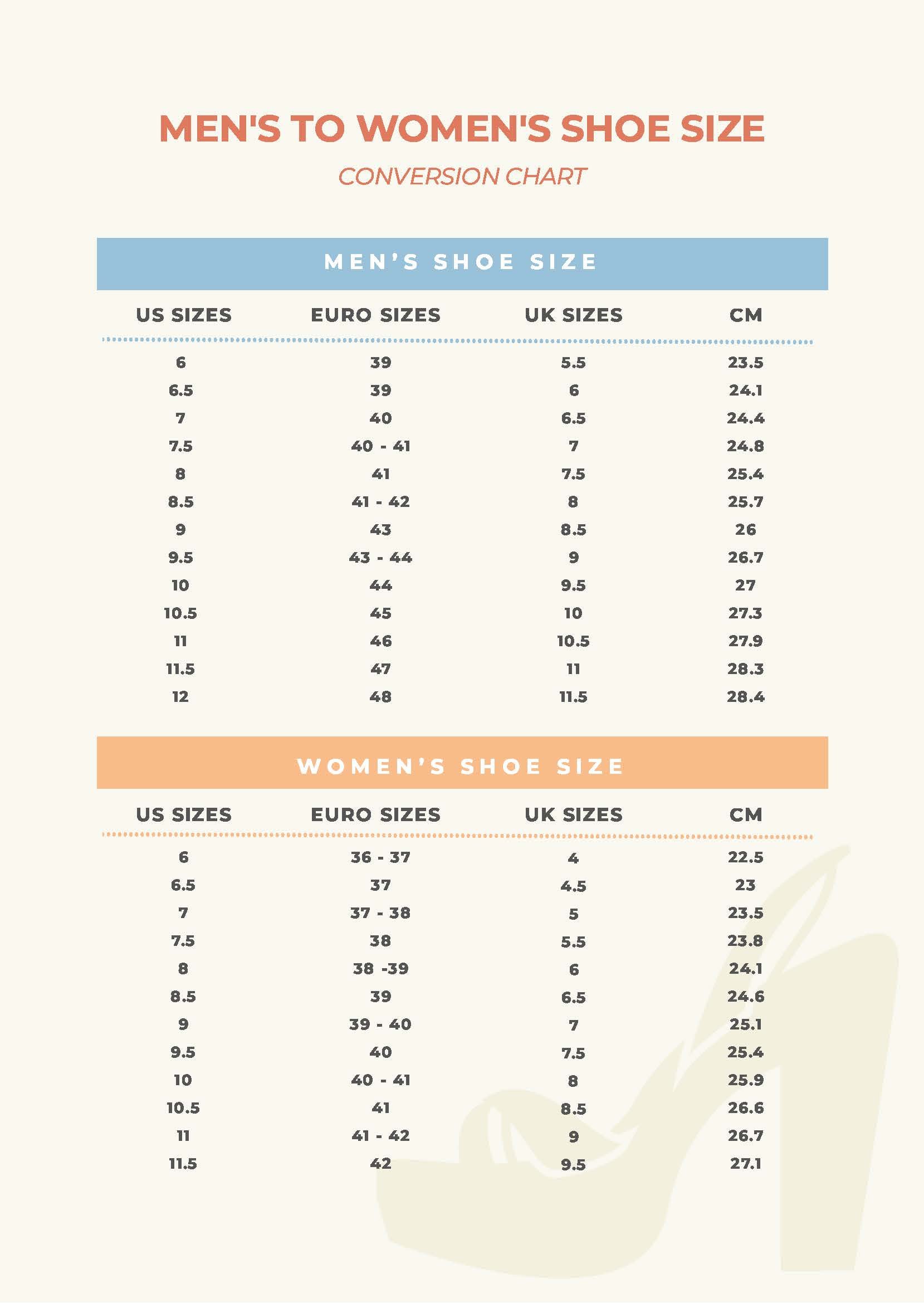
Technology in Shoe Sizing
With advancements in technology, buying shoes has become easier. Brands are adopting innovative solutions to streamline the sizing process:
1. 3D Foot Scanning
Some companies now offer 3D foot scanning technology that captures the exact dimensions of your foot for a perfect fit. This technology helps eliminate size guesswork.
2. Virtual Try-Ons
Augmented reality (AR) apps allow users to virtually try on shoes using their smartphones. These tools are becoming increasingly popular among online retailers.
Understanding Brand Differences in Sizing
Comparative Sizing of Popular Brands
| Brand | How Their Sizes Compare |
|---|---|
| Nike | Typically runs true to size, but some models may run small. |
| Adidas | May run slightly larger than other brands; many opt for half a size smaller. |
| Converse | Unisex sizing; women may need to size down by 1-1.5 sizes. |
| New Balance | Often considered true to size with a wider fit option available. |
Local Experiences and Cultural Insights
In the USA, the popularity of sneaker culture has significantly influenced how people approach shoe shopping. From events like Sneaker Con to local meetups at parks, the community’s love for stylish kicks has made perfect sizing even more critical. Many women have embraced men’s sneakers not just for comfort but for their unique style and versatility, bridging the gap between traditional gendered fashion.
FAQs
What is the easiest way to convert men’s shoe sizes to women’s?
The simplest method is to add 1.5 to the men’s size. For example, a men’s size 8 would convert to a women’s size 9.5.
Are there brands that offer unisex shoe sizes?
Yes, brands like Nike and Adidas often provide unisex sizes, making it easier for shoppers to select the right size without worrying about gender-based conversions.
Why do shoe sizes vary so much between brands?
Shoe sizes can vary due to differences in design, material used, and the target demographic for the brand. Each brand may have its sizing standard, leading to discrepancies.
What should I do if the shoes I ordered online don’t fit?
Check the retailer’s return policy. Most online retailers allow exchanges or returns, which can help you find the right size. Ensure you measure your feet and refer to their size chart for future purchases.
Conclusion
Understanding the conversion from men’s shoe sizes to women’s is crucial for any footwear purchase, whether for comfort or style. By utilizing size charts, measuring your feet, and reading reviews, you can navigate the world of shoe shopping with confidence. With modern technology and a growing emphasis on inclusivity in fashion, finding the perfect pair of shoes has never been easier. Always remember to check the specific sizing guidelines of the brand you are purchasing from to ensure the best possible fit.